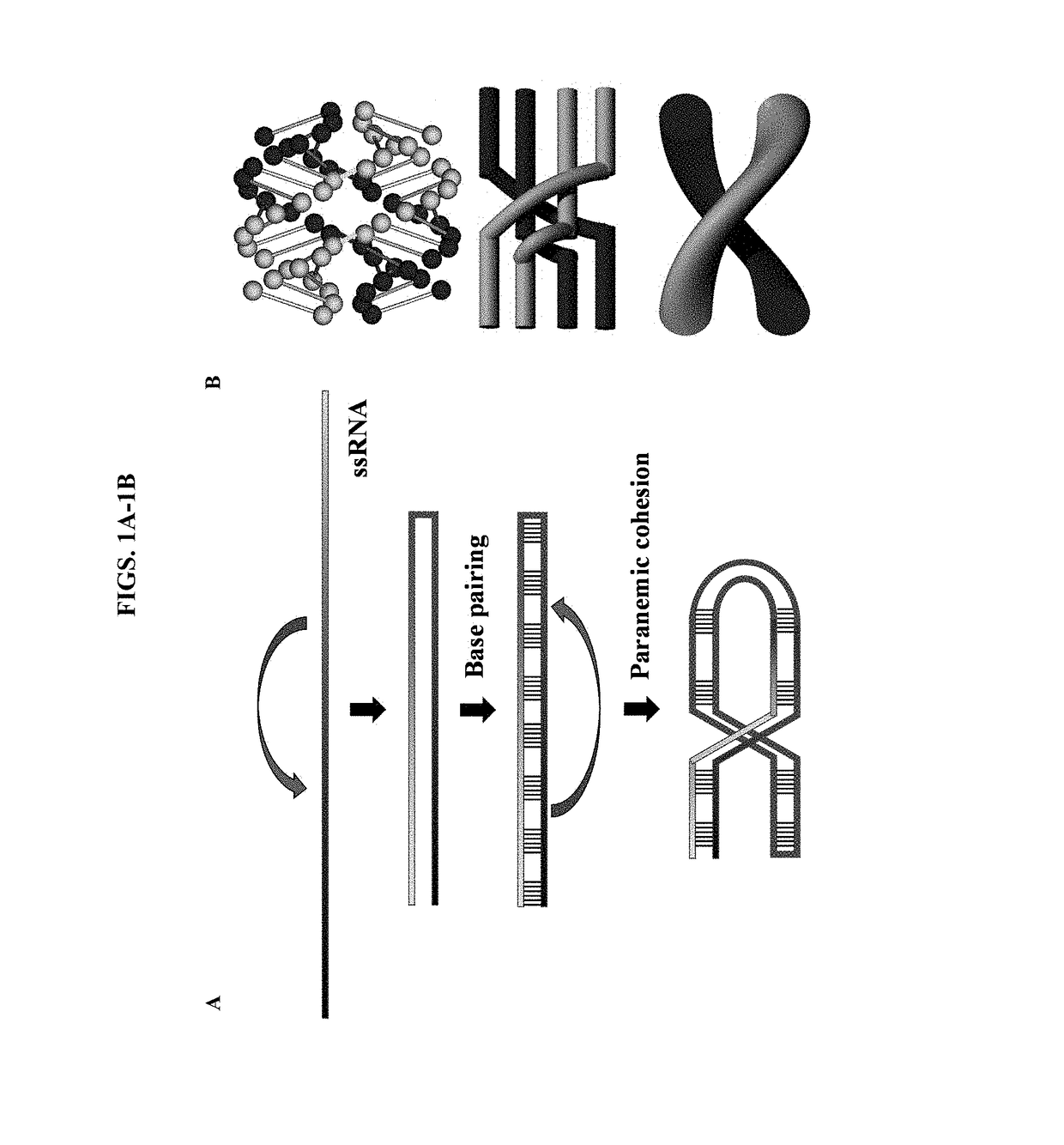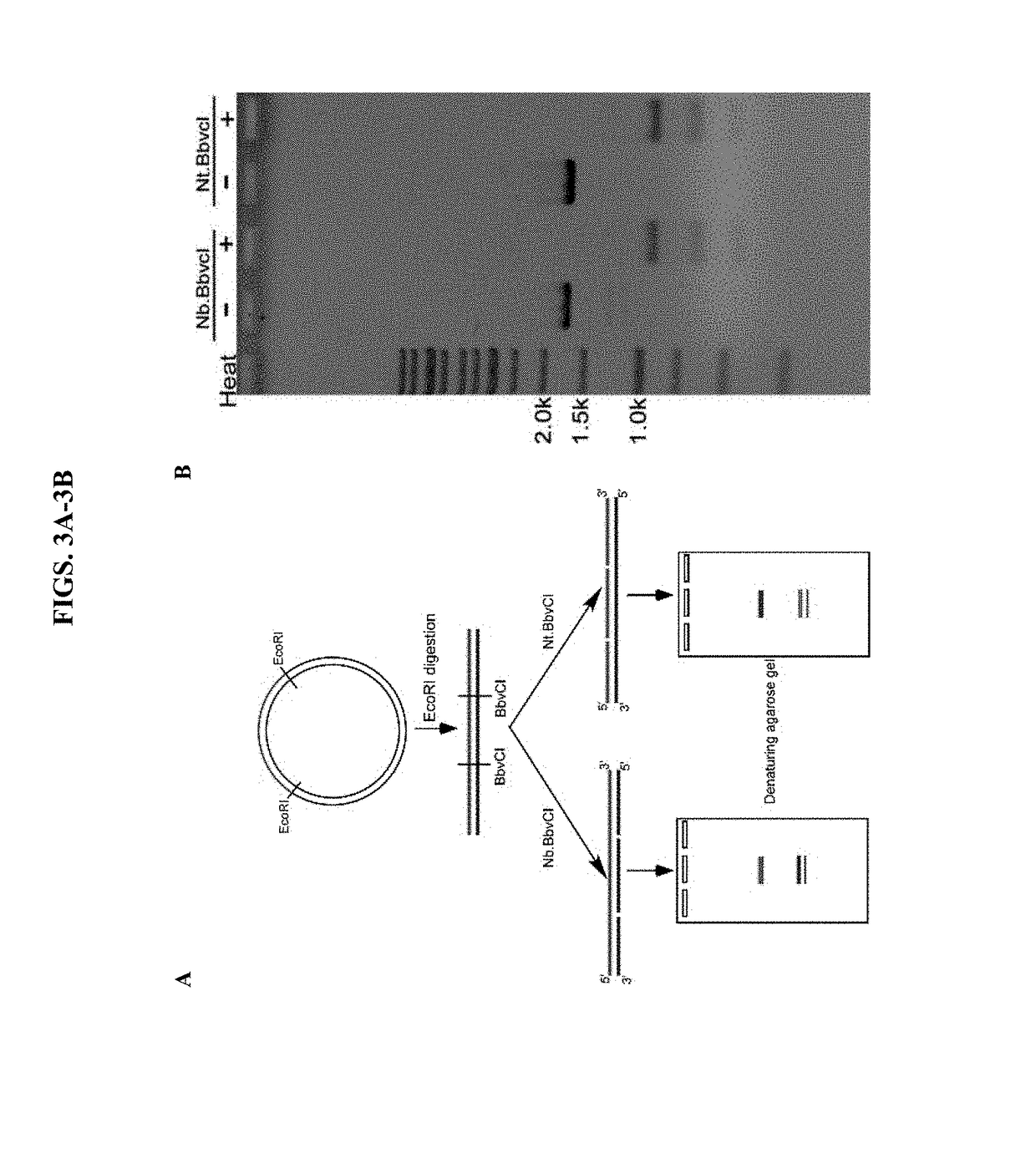Structure assisted directed evolution of multivalent aptamers
- Summary
- Abstract
- Description
- Claims
- Application Information
AI Technical Summary
Benefits of technology
Problems solved by technology
Method used
Image
Examples
examples
[0068]This example demonstrates the design, construction, and replication of ssDNA origami nanostructures.
[0069]We designed and constructed a square DNA structure formed from a 6.6-kb DNA based on the paranemic DNA crossover topology. The square lattice wireframe ssDNA had a crossing number of 57. The two terminal ends needed to wind through the whole frame 57 times in the correct order. The high-resolution atomic force microscope (AFM) images shown in FIGS. 5A-5C confirm that the formed structures have tight, neat edges. We also observed partially formed structures with blurred edges and DNA loop coils. To further verify the winding process, we used the AFM tip and attempted to scratch the structures. The DNA strands on partially formed structures could be easily scratched out, while the well-formed structures maintained their integrity.
[0070]To test the M13 phage replication strategy, the square DNA structure formed from a 6.6-kb DNA was artificially synthesized and cloned into a ...
PUM
| Property | Measurement | Unit |
|---|---|---|
| Length | aaaaa | aaaaa |
| Affinity | aaaaa | aaaaa |
Abstract
Description
Claims
Application Information
 Login to View More
Login to View More - R&D
- Intellectual Property
- Life Sciences
- Materials
- Tech Scout
- Unparalleled Data Quality
- Higher Quality Content
- 60% Fewer Hallucinations
Browse by: Latest US Patents, China's latest patents, Technical Efficacy Thesaurus, Application Domain, Technology Topic, Popular Technical Reports.
© 2025 PatSnap. All rights reserved.Legal|Privacy policy|Modern Slavery Act Transparency Statement|Sitemap|About US| Contact US: help@patsnap.com



